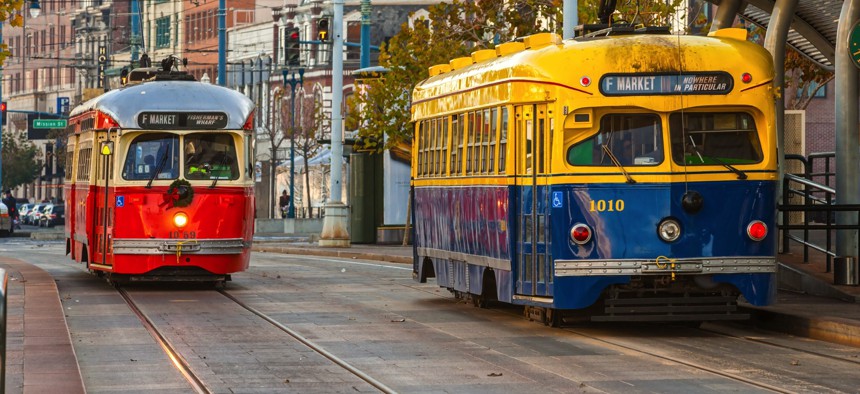When Big Transit Visions Meet Complex Flowcharts for Planning and Budgeting

The San Francisco Municipal Transportation Agency offers historic streetcar service along the Embarcadero. Luciano Mortula / Shutterstock.com

Connecting state and local government leaders
San Francisco wants to expand its Muni network. But explaining the process to advance those plans isn’t easy.
When anyone lays out a long-range transit planning document before the public, transportation nerds will most likely salivate, especially when lines of various colors, thicknesses and types representing expansion projects show what could be possible—someday.
This month, the San Francisco Municipal Transportation Agency, locally known as Muni, released such a planning document draft that lays out some very exciting ideas for its light rail and bus network, which is separate from the Bay Area Rapid Transit agency, which oversees the regional, multi-jurisdictional rail network.
While BART plays a big role in getting commuters in and out of San Francisco, Muni’s local transit network is what stitches the city’s neighborhoods together.
And as any San Franciscan can tell you, there are significant gaps in that local network. That includes “a deficit of high-capacity transit” service in the Geary Boulevard corridor connecting San Francisco’s central business district, Western Addition and the Richmond District and bringing the Central Subway beyond its planned terminus in Chinatown to North Beach, Fisherman’s Wharf and perhaps elsewhere.
Article continues below ...

There are also major chokepoints throughout Muni’s aging and complicated rail network, which includes both light-rail subways and surface street alignments, all detailed in the report.
“San Francisco’s rail system right now is a hybrid of the best engineering from the 1920s and the early 1980s,” according to the Draft Rail Capacity Strategy report.
And if nothing is done, the already crowded local transit network will become even more congested in the decades to come.
But like any large city with unmet transportation infrastructure needs, there are two massive challenges that have to be sorted out: planning and funding.
Explaining this can be a daunting task to say the least.
So while all those maps with new Muni light rail lines and other transit connections are definitely exciting, there’s something that’s more important: the flowchart laying out the way forward for planning and assembling the funding needed to make the long-term vision a reality.
Article continues below ...

If you’re looking at the flowchart, the blue items are “planning activities” while the green items are “funding activity” involving various governmental entities and stakeholders.
If only leaders in San Francisco City Hall could simply snap their fingers and make these projects materialize. That “Implementation Roadmap” involves a long journey forward.
Michael Grass is Executive Editor of Government Executive’s Route Fifty. (Lead image by Luciano Mortula / Shutterstock.com)

NEXT STORY: Route Fifty’s Complete Coverage of NGA Winter Meetings, NACo Legislative Conference





